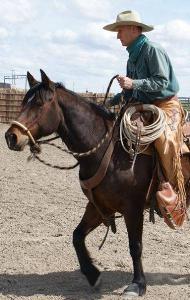 Editor’s Note: Dr. Steve Peters, co-author of Evidence-Based Horsemanship, writes this guest column on the research and science behind equine-related brain injury, with a personal account of cognitive dissonance and his new outlook.
Editor’s Note: Dr. Steve Peters, co-author of Evidence-Based Horsemanship, writes this guest column on the research and science behind equine-related brain injury, with a personal account of cognitive dissonance and his new outlook.
By Steve Peters
I love my cowboy hats. My tack is Western and Vaquero and I take great pride and joy in its quality and historical traditions. The cowboy hat was just the crowning glory for the whole look and feel of this way of riding.
Was.
I am also a clinical neuropsychologist. When I moved to Utah, I began work at a sports medicine clinic, assessing sports concussions as well as seeing patients with traumatic brain injuries (TBI’s). I am well-versed in the literature and knowledge surrounding brain injuries.
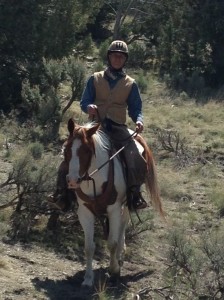 Cognitive dissonance is a theory attributed to psychologist, Leon Festinger in the 1950’s. It’s the feeling of psychological discomfort that comes from holding two strong contradictory beliefs. Relief from this disharmony only comes from returning to a consistency in our inner belief system. Read about life-long learning and cognitive dissonance.
Cognitive dissonance is a theory attributed to psychologist, Leon Festinger in the 1950’s. It’s the feeling of psychological discomfort that comes from holding two strong contradictory beliefs. Relief from this disharmony only comes from returning to a consistency in our inner belief system. Read about life-long learning and cognitive dissonance.
I rode horses in my cowboy hat, just like all the cowboys I know and whose riding styles I tried to emulate. But they almost all had stories of being kicked in the head or sustaining concussions, many with lasting impact. It did not surprise me as it is my job to know that recurrent TBI’s can lead to chronic neuropsychological impairments. It is also scary to note that due to the unpredictability of horses, even the most experienced are prone to injury while handling or riding them.
Then, I sustained my first horse-related concussion. I have started my own horses and put the first rides on neighbors’ horses. I have been bucked off more times than I’d like to admit but until last fall, I’ve avoided injury to my brain. Somehow, I had relied on ignoring or justifying my behaviors to avoid the
conflict with reality and my true inner belief.
Even as co-author of the book titled Evidence-Based Horsemanship, I was ignoring clear evidence-based research.
Horseback riding has been identified as a higher risk activity than automobile racing, motorcycle racing, football and skiing. Read the research here. In these sports as well as cycling, participants wear helmets. Ironically, it is the younger generation that is more apt to wear a helmet. On many ranches, however, young cowboys and cowgirls are raised without a culture of using a helmet for brain protection.
Head injuries are the most common reason for horseback riders to die or be admitted to a hospital. My concussion was the first time I went to the Emergency Department for a horse-related injury. Clinically, my symptoms were confusion, amnesia, delayed verbal expression, inability to maintain focus and concentration, double vision and migraine-equivalent headaches. As a professional in the field, I am also aware of the evidence of microscopic axonal injury, cytotoxic edema (swelling) and the release of excitatory neurotransmitters adding to the injury.
Check out this science-y video on what happens to your brain after a mild TBI.
Talk about strong feelings of cognitive dissonance!
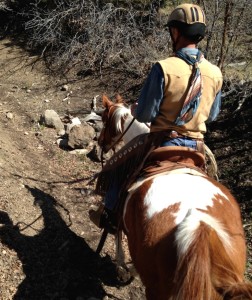 Everyday I was seeing patients and recommending helmet use. In the past 20 years, hospital admittance for equine-related head injury has declined by over 40%. This statistic is directly associated with increased helmet use and improved, state-of-the-art helmet design to protect against blunt force trauma (horses hooves, fixed objects, the ground). I was like a smoking doctor counseling patients on carcinogens and lung cancer.
Everyday I was seeing patients and recommending helmet use. In the past 20 years, hospital admittance for equine-related head injury has declined by over 40%. This statistic is directly associated with increased helmet use and improved, state-of-the-art helmet design to protect against blunt force trauma (horses hooves, fixed objects, the ground). I was like a smoking doctor counseling patients on carcinogens and lung cancer.
I could no longer deny the importance of helmet use for brain safety. I could no longer ignore or justify my actions. I had to change my behavior to align my actions with my true beliefs as a person and a scientist.
The undeniable bottom line: The use of sport-specific helmets have been shown to significantly reduce the possibility of brain injury in all equine-related activities.
After my injury, I felt embarrassed and dumb. I also lost confidence in my riding and did not want to ask anything of my horses that would bring out a need for negotiation (if you know what I mean). When I needed to be firm, I did it half-heartedly. Riding was not enjoyable.
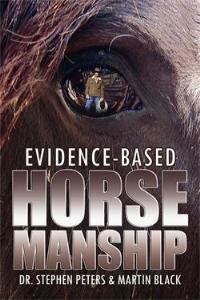 I researched and bought a helmet. I got one rated and approved by the Safety Equipment Institute (SEI). The helmet I bought had a tan leather cover that I liked immediately. It has great ventilation, comfortable fit, and is lightweight.
I researched and bought a helmet. I got one rated and approved by the Safety Equipment Institute (SEI). The helmet I bought had a tan leather cover that I liked immediately. It has great ventilation, comfortable fit, and is lightweight.
Putting it on, I felt like any athlete preparing for action. I felt smart again and much relieved on a deeper psychological level as I felt my cognitive dissonance disappear. I rode with new assertiveness and better rapport with my horses.
Not only was I finally being true to myself, but I got my confidence back. And I still have plenty of great cowboy hats for wearing around while doing chores.
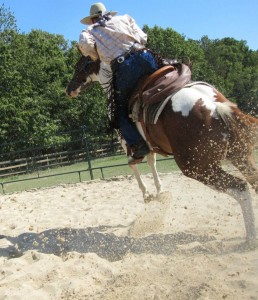
I only have great praise for you Steve! As you know, even minor concussions can have ill-effects down the road, let alone a major concussion, and they all can have a cumulative effect. Safety helmets do not detract from the cowboy experience or look. I look forward to seeing photos of you in your cowboy hats scooping manure and other such horse-related chores 🙂
Wow, Steve what a great article! I really enjoyed you sharing your beliefs and experiences before and after! I am not sure you have had an opportunity to validate this, but I recently learned too that helmets have a ‘shelf-life’. Mine was rather old and someone mentioned to me that they are only good for specific periods of time. Needless to say I got a new one and to your point the latest designs are really good for comfort yet safety! Thanks again for your insights.
Thank you so much for this evidence based article on helmets!!! I have been curious since your unfortunate accident, if your close encounter would result in a public endorsement of helmets. You and Maddy continue to enlighten your readers, even if it means letting go of long held beliefs and habits. Hope we will be seeing Maddy wearing a helmet, too:)) Your friends, family and readers would all suffer a huge loss, if we no longer had the both of you enriching our lives.
I read with interest the article on helmets. I come from the hunter/jumper world and the only time we wore our helmets was for jumping. And we did that without fail. For years and years I rode without a helmet and just plopped my beloved cowboy hat on my head. One day my trail friends, who all wore helmets told me I had two weeks to get a helmet or they would not ride with me!! Talk about serving up an ultimatum – well I gave in – at least for the trail rides. That wonderful trail horse passed on 4 years ago and now I never get on any horse without my helmet. I admit that I had to go the traditional route, with the black velvet like cover, to be comfortable. The sales lady told me that many folks my age opt for that look because like me they fox hunted or horse showed with that look forever. Does not matter- the head is protected and that is what we are after. Though jokingly, I have been told that my brains are in my butt – where do you find a helmet to cover that!! That always brings great laughs. Like Steve, I still use my cowboy hat collection to its fullest doing chores, after taking that protective lid off, and even when I’m judging hunters and jumpers. And lets not forget our tough rodeo riders – more and more of them are wearing helmets – what a great example they are!!
I really enjoyed your article, and am glad more people are taking the plunge and riding with a helmet. Your own personal and professional experiences help show us, that we are all susceptible to having a possible head injury if we ride. I personally prefer giving my brain the best possible chance of survival, if or when I come off my horse.